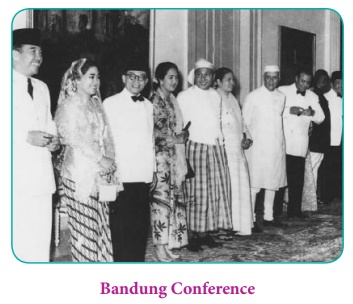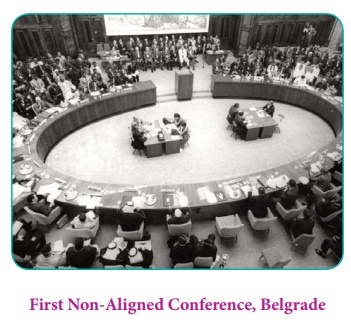The World after World War II | History - Third World Countries and Non-Alignment | 12th History : Chapter 15 : The World after World War II
Chapter: 12th History : Chapter 15 : The World after World War II
Third World Countries and Non-Alignment
Third
World Countries and Non-Alignment
In the aftermath of Second World War many colonial
countries in Asia, Africa and Latin America got their independence from
imperial rule. The newly independent countries were upset by the Cold War
strategy of USA and USSR. They viewed power blocs as another form of
imperialism and so decided to keep away from such politics. Calling themselves
countries of Third World, a term coined by French demographer and historian
Alfred Sauvy in 1952, they decided to follow an independent and neutral policy
in their foreign affairs.
Non-Aligned Movement (NAM)

In 1955 the first Afro-Asian Conference was held at
Bandung in Indonesia where 29 states, mostly new independent states, including Egypt,
Indonesia, India, Iraq and the People’s Republic of China, gathered to condemn
colonialism, apartheid and growing tensions due to Cold War. The conference
adopted a 'Declaration on Promotion of World Peace and Cooperation' which
included Nehru's Panchsheel and a collective pledge to remain neutral in the
Cold War. The ten principles of Bandung later became the guiding principles of
NAM. The term "non-alignment" was coined by V. K. Krishna Menon in
1953 at the United Nations.
Based on the Ten Principles of Bandung, the First
Summit of NAM was held at Belgrade, the capital of Yugoslavia in 1961. Five
members played a prominent role in the foundation of NAM: Jawaharlal Nehru of
India, Sukarno of Indonesia, Gamal Abdel Nasser of Egypt, Kwame Nkrumah of Ghana
and Josip Broz Tito of Yugoslavia. The objective of NAM was to "create an
independent path in world politics. The most important objectives included
ending of imperialism and colonialism, promotion of international peace and
security and disarmament, ending of racism and racial discrimination.” The
statement issued at the end of the Belgrade conference also deprecated military
pacts with any great power or the permission for any super power to build a
military base in its territories.

The following goals and objectives were set by the
proponents of the Non-Aligned Movement at the 1955 Bandung Conference:
·
Respect of fundamental human rights and of the
objectives and principles of the Charter of the United Nations.
·
Respect for the sovereignty and territorial
integrity of all nations.
·
Recognition of the equality among all races and of
the equality among all nations, both large and small.
·
Non-intervention or non-interference in the
internal affairs of another country.
·
Respect for the right of every nation to defend
itself, either individually or collectively, in conformity with the Charter of
the United Nations.
·
Non-use of collective defence pacts to benefit the
specific interests of any of the great powers.
·
Refraining from acts or threats of aggression and
use of force against the territorial integrity or political independence of any
country. Non-use of pressures by any country against other countries.
·
Settlement of all international disputes by
peaceful means, such as negotiation, conciliation, arbitration or judicial
settlement as well as other peaceful means of the parties’ own choice, in
conformity with the Charter of the United Nations.
·
Promotion of mutual interest and cooperation.
·
Respect for justice and international obligations.
During the Cold War period, NAM acted as an
alternative for the power bloc politics. With the disintegration of Soviet
Union, NAM became irrelevant.
The Panchsheel (five
principles), policy of Nehru, included 1. Mutual respect for each other's territorial
integrity and sovereignty, 2. Mutual non-aggression, 3. Mutual non-interference in domestic affairs, 4. Equality and
mutual benefit, 5. Peaceful co-existence.
Related Topics